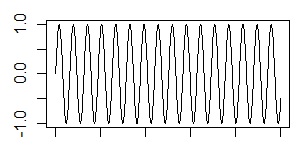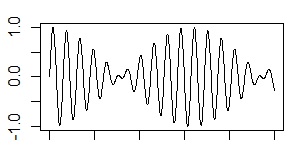Let me see if I can put this in simple terms. I wrote a simulation of this once.
You start with a simple wave like $exp(i \omega_1 xt)$ that sits there oscillating on the real x line. That represents a particle whose energy you know, but whose position you don't, because the probability of it's being anywhere in x is everywhere equal.

Now you introduce some uncertainty in energy, adding in a second wave with frequency $\omega_2$. When you do that, you get a beat frequency between the two waves. Where the waves reinforce, the wave is strong and the probability is high. Where they cancel, the wave is weak and the probability is low.
If
 If you add in another wave at, say, $\omega_3$, you still get a beat pattern, but the peaks are further apart.
Every additional wave you add causes the peaks to appear further apart.
So that's how more uncertainty about energy causes less uncertainty about position (because there are more places where the probability is low).
This is five waves added together, with slightly different $\omega$:
If you add in another wave at, say, $\omega_3$, you still get a beat pattern, but the peaks are further apart.
Every additional wave you add causes the peaks to appear further apart.
So that's how more uncertainty about energy causes less uncertainty about position (because there are more places where the probability is low).
This is five waves added together, with slightly different $\omega$:

Take this to its extreme:
Add in an infinite number of waves, all of slightly differing $\omega$, and the peaks become infinitely far apart, so the one peak you see has all its probability in one place.
